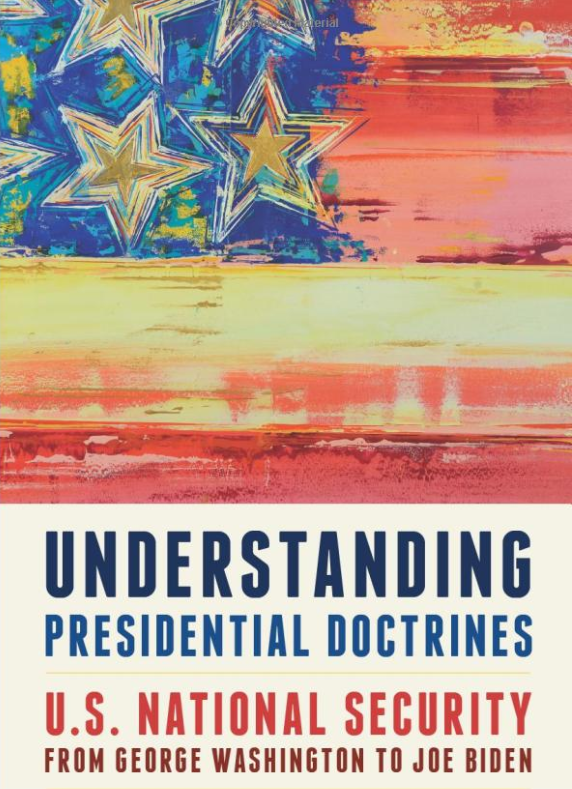Book Review: Understanding Presidential Doctrines U.S. National Security from George Washington to Joe Biden

Understanding Presidential Doctrines demonstrates a comprehensive, balanced, and central dual study of US presidential doctrines and foreign policy. The book traces themes and ideologies that shape US foreign policy through the lens of presidential doctrines.
The extensive contextual analysis reveals the US foreign policy pillars invoked in presidential doctrines and the limits postulated on presidential power in decision making.
The authors, Aiden Warren and Joseph Siracusa, sketch an all-encompassing overview of the development and variation of US foreign policy through a generous historical analysis of presidential administrations. The analysis weaves through what the authors have determined to be vital presidential doctrines, starting with President George Washington, and navigate their way to the current US president, Joe Biden, culminating in work that has effectively demonstrated how policymakers have adapted presidential doctrines for new eras, environments, and threats to pursue American national interests while continually maintaining an exceptionalist temperament. American national interests are lucidly defined by the authors as the promotion of the principles and values of democracy, notions of freedom, an open free market system, self-determining states, and a secure global environment in which the US can pursue its goals unconstrained. The overview of the initiative and ambition of US presidential administrations succours the reader in comprehending how the US has attained and, to an extent, maintained its prominent global position and what previous attributes and limitations still endure in foreign and domestic policy. Such analysis elucidates the multidimensional impasses the US currently faces due to the endurance of past foreign policy challenges.
Warren and Siracusa, two leading American foreign policy experts, have fashioned a comprehensive evolution of US global power with preceding obligations and engagements the incoming presidents inherit. There is a continuous ebb and flow between former and contemporary policy. Administrations are bound to past policies filled with commitments and resolutions while simultaneously trying to forge new directions in an unremittingly altering world. The authors have successfully augmented past and present presidents’ foreign policies into the larger US foreign policy development context. A prominent illustration made in the book is the translation of the use of force paradigm from George W. Bush to Barack Obama.
Obama entered office with the ideals of changing the US international standing after the Bush administration’s “War on Terror” campaign. However, what became apparent under the Obama presidency was the preservation of Bush-era notions of American security and ideals. The Bush administration began the 21st century with America at the centre of the international order. The unchecked power Bush held led to the US creating and using a preventive conception of the use of force to keep other states in line. The Bush administration enforced power to define and impose an international hierarchy to benefit its strategic objectives.
The Obama Doctrine was torn between completely dismembering the Bush administration’s preventive notion of the use of force and using it for its benefit. The Obama administration was able to use its power to craft positive and legitimate changes in international governance. Nevertheless, it followed the same trajectory as the Bush administration with the use of force and, in some instances, expanded on the use of force. Obama entered office with unbridled power. Although Obama and his administration were able to partially use it to fulfil their ambitious rhetoric, the administration expended the policies of the Bush era to ensure the continuance of American power.
An essential point presented in the book is the doctrinal drive of the Cold War era and how it has impacted contemporary US policy choices. The book has the potential to expand on this notion under the discussion of the Biden administration. Since coming into office, President Biden has devoted resources towards re-establishing a stable nuclear arms regime. Earlier in the book, sections within chapters four, five, and six devote time and energy to describing the tactics and approaches taken by presidents during the Cold War era relating to nuclear arms. Chapter six deliberates the differing approaches and their results from the different presidents from that time period. Since the Cold War, nuclear arms treaties have been a constant, evolving to meet new challenges facing the US. After Donald Trump’s presidency, however, the Biden administration was left with the necessity and urgency to re-establish nuclear arms treaties for a more stable global order.
Although technologies and the formality of threats have transformed since the Cold War, nuclear arms and control over them have become a modern-day peril. The current administration is facing similar quandaries to the Cold War presidencies. The threat of nuclear war is rising, with regimes challenging America’s standing and interests in the global composition. A comparison of the efforts from the Cold War period with the Biden administration would have been highly beneficial to show how threats, approaches, and decision making have changed and yet are still the same between the 20th and 21st century.
Academics who have studied and interacted with US foreign policy would have been exposed to the notion of US presidential doctrines. Understanding Presidential Doctrines has added to this rich literature through an extensive and expansive historical and analytical account through the lens of presidential administrations. The book should be applauded for its deep dive into, as the authors phrase it, “historical tapestry.” As world politics becomes more precarious and irrational, a re-evaluation of US presidential doctrines and how to assess them is a necessity. Warren and Siracusa have positively contributed to this highly emotive debate with finesse and precision through a broad overview of what US foreign policy has embodied since the Washington era.
This is a review of Aiden Warren and Joseph M. Siracusa, “Understanding Presidential Doctrines U.S. National Security from George Washington to Joe Biden” (Rowman & Littlefield) ISBN: 9781538155257.
Tyler Venske recently graduated with a Master in International Relations from the University of Sydney, focusing on US Foreign Policy. She is currently a research associate at the African Centre for the Study of the United States at the University of the Witwatersrand.
This article is published under a Creative Commons Licence and may be republished with attribution.





